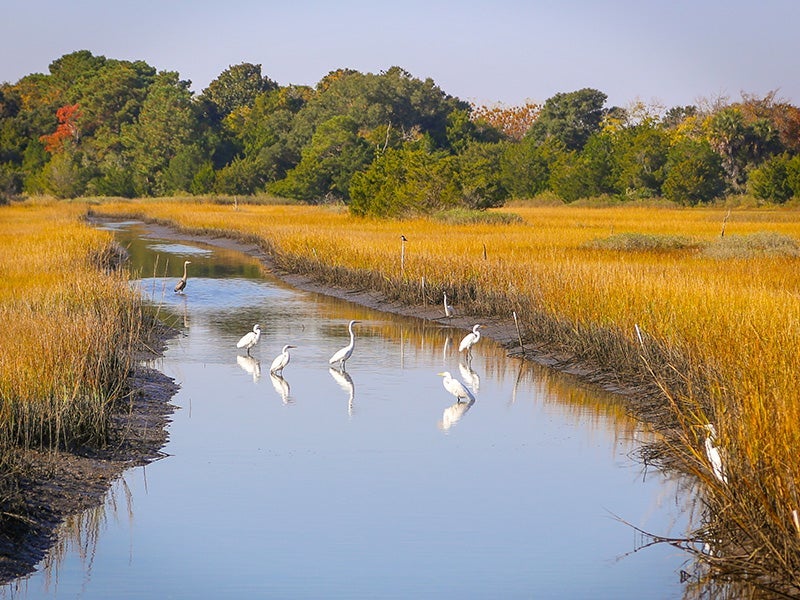Earthjustice goes to court for our planet.
We’re here because the earth needs a good lawyer.
Trump’s EPA Just Tried to Gut the Protections That Keep Our Drinking Water Clean
What happened: Trump’s EPA and the U.S. Army Corps of Engineers proposed a rule that would end federal protections for many wetlands and streams in the U.S., imperiling critical habitats and the clean drinking water of millions of Americans.
Why it matters: The new rule could strip safeguards from more than 80% of all wetlands nationwide. It would also take away protections for ephemeral streams, which make up about 59% of all streams in the U.S.. Industrial polluters have lobbied for such changes for years.
All waterways are connected. Wetlands filter pollution from rivers, lakes, and streams, and many streams are drinking water sources. We can’t afford to destroy these water bodies or add more pollutants to the mix. Earthjustice has fought for decades to ensure access to clean water as a right for all, and we are prepared to go to court to defend this right for communities across the U.S.
Join us in the fight for clean water for all.
How’d we get here?
- For decades, developers and other polluting industries have wanted to scale back the 1972 Clean Water Act.
- The text of the law says it is intended to protect “the waters of the United States.” Polluters have argued that certain water bodies, including wetlands, do not actually count under this designation. It would be convenient for industrial interests if this were so, because then they would not need a federal permit to exploit, contaminate, or destroy these critical waters.
- In case you missed it, water flows downstream. Pollution upstream — in wetlands, streams, and other waters — affects water quality downstream. Excluding these water bodies from protection threatens all connected water bodies with pollution.
- The Supreme Court already struck a blow to clean water. In the 2023 case Sackett v. EPA, the court sided with polluters, eliminating longstanding protections for millions of acres of wetlands. It defined “waters of the U.S.” as having a “continuous surface connection” to a “relatively permanent” body of water. However, it did not define “relatively permanent.”
What does the proposed rule say?
- Trump’s EPA is picking up where SCOTUS left off. The newly proposed rule narrows the scope of wetlands protections to include only wetlands that a) hold surface water for the duration of a “wet season” and b) connect to a water body that has water continuously flowing during the wet season.
- In practice, this means more than 80% of wetlands would lose Clean Water Act protections, according to the government’s own analysis. The proposed Trump rule would delete all Clean Water Act protections for ephemeral streams, watercourses that depend entirely on rain or snowmelt for their flow.
- Wetlands play a critical role in filtering pollutants out of water – so making it easier to destroy them is bad news for downstream drinking water supplies.
- In addition, wetlands are critical habitats for fish, waterfowl, and other wildlife.They also shield communities from the destructive power of floods and storms.
- Ephemeral streams are the source of 55% of the water flowing through regional river systems, according to a study published in Science last year. Many communities get their drinking water from these rivers.
What can we do to fight back?
- The EPA will hold a 45-day comment period on the proposed rule. This is a chance for the public to urge the agency to keep critical water protections intact.
- As Earthjustice Vice President of Litigation for Lands, Wildlife, and Oceans Drew Caputo said, “Earthjustice, along with our clients and partners, will carefully evaluate today’s proposal and not hesitate to go to court to protect the cherished rivers, lakes, streams, and wetlands that all Americans need and depend on.”
